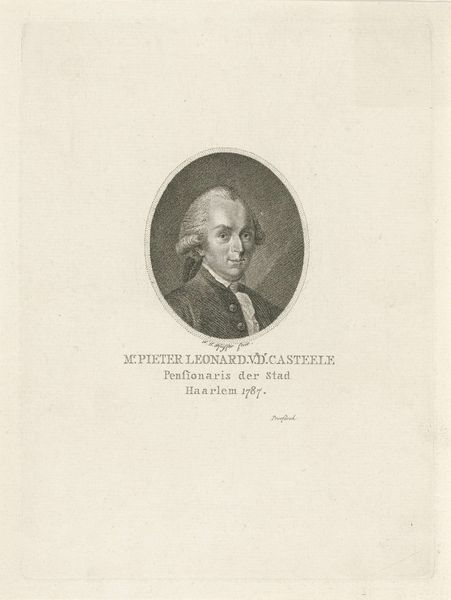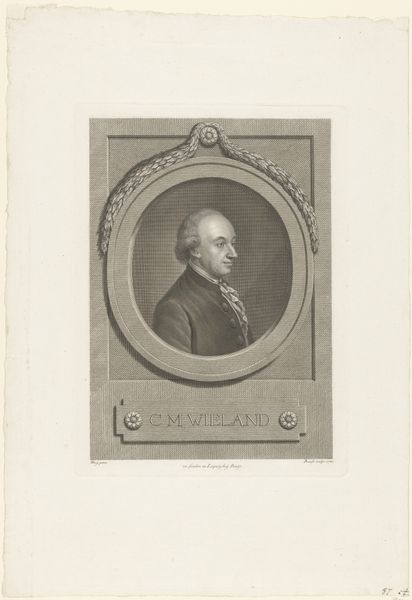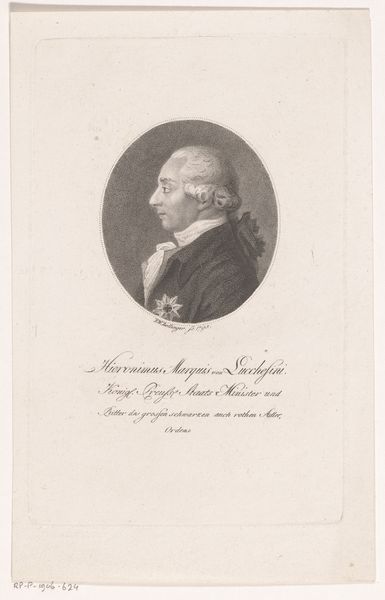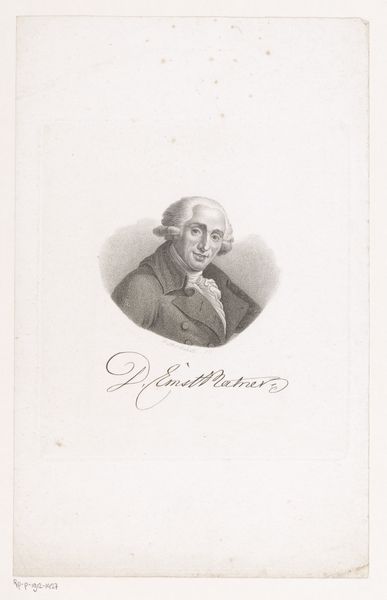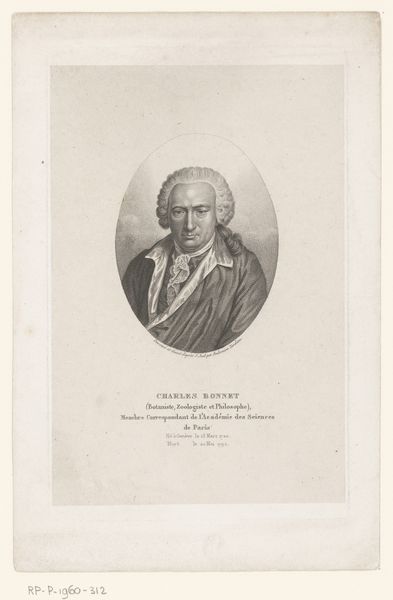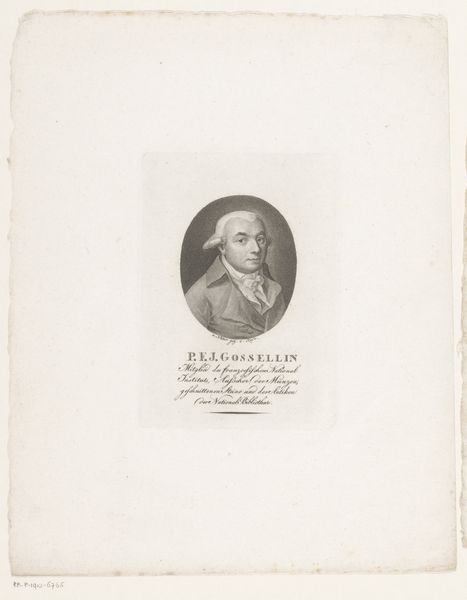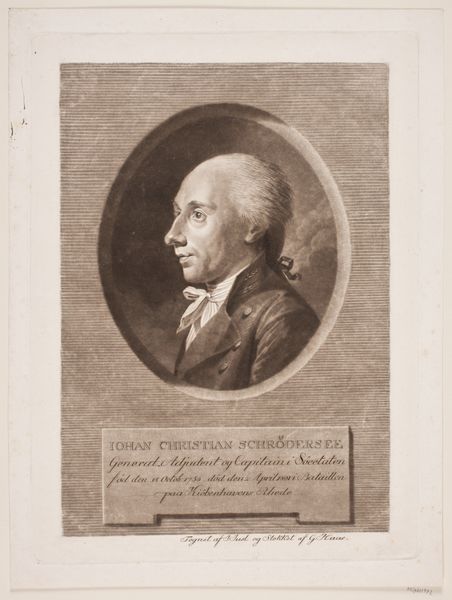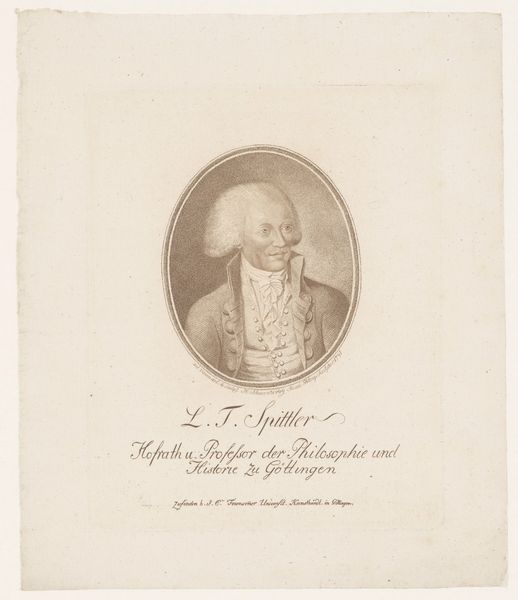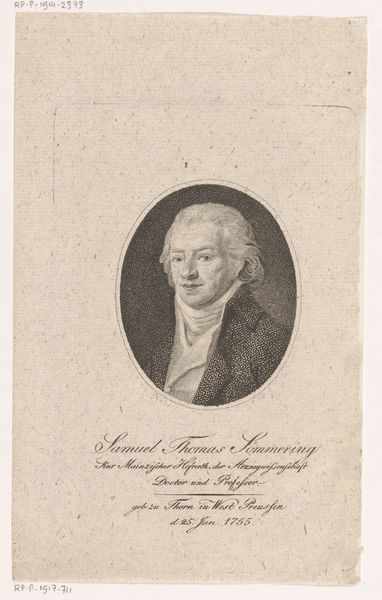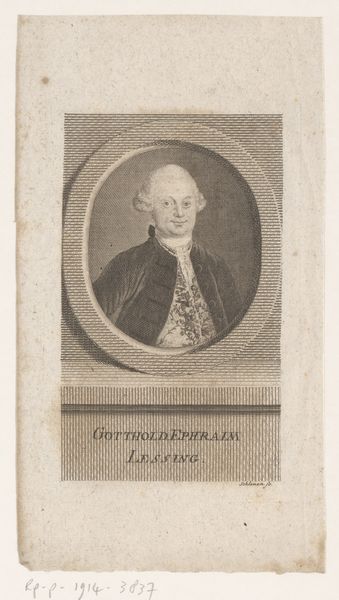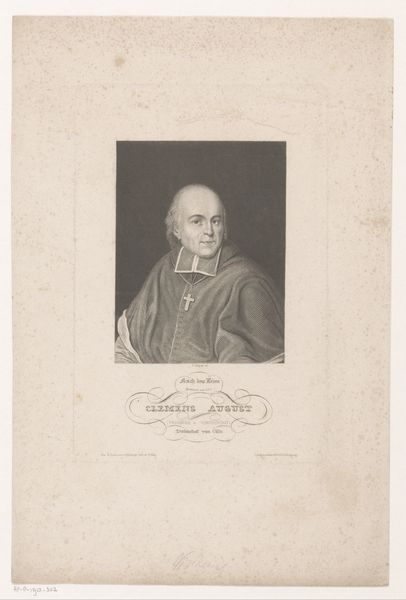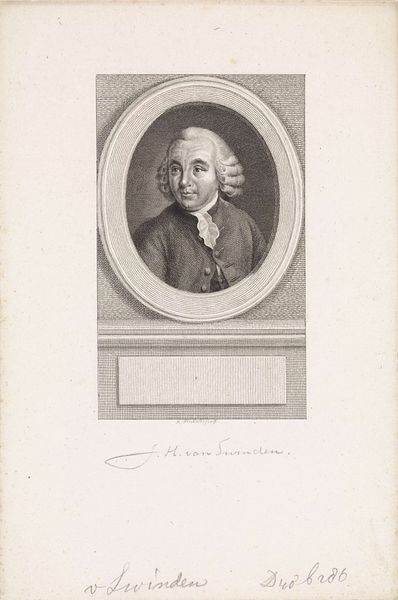
Dimensions: height 177 mm, width 123 mm
Copyright: Rijks Museum: Open Domain
Editor: This is a portrait of Wilhelm Bucholtz, an engraving made sometime between 1776 and 1834. There’s a formality to it, a sense of a man in his position. What kind of significance do you see in an image like this, beyond just a depiction? Curator: Consider the oval frame – it’s almost womb-like. And think about what it means to memorialize someone in print during this era. It’s about lineage, the preservation of status. This image becomes a token, almost a relic of cultural memory for those within his circles. It’s fascinating how images function like a family crest in this period, silently communicating values and social standing. Notice how his gaze directs to the upper right? Editor: Now that you mention it, there seems to be purpose with the gaze; what could it signify? Curator: That direction, combined with his profession mentioned below as 'Bergrath und Hofmedicus,' could mean aspiration, his hope in science, or looking forward to a continued reign under his service to the Duke. It implies vision, progress. And engravings, mass-produced and shared, amplified that vision, projecting Bucholtz into the broader consciousness. What do you think his serious facial expression means? Editor: He definitely exudes the energy of someone to be reckoned with...the overall grayness makes it hard to infer additional aspects from this engraving. I appreciate this deep dive into visual messaging, giving me an alternative method to interpret portraits from this time! Curator: Precisely! That is the subtle, yet resounding power of art in engravings; let’s not overlook this historical aspect when we consider Wilhelm Bucholtz.
Comments
No comments
Be the first to comment and join the conversation on the ultimate creative platform.
